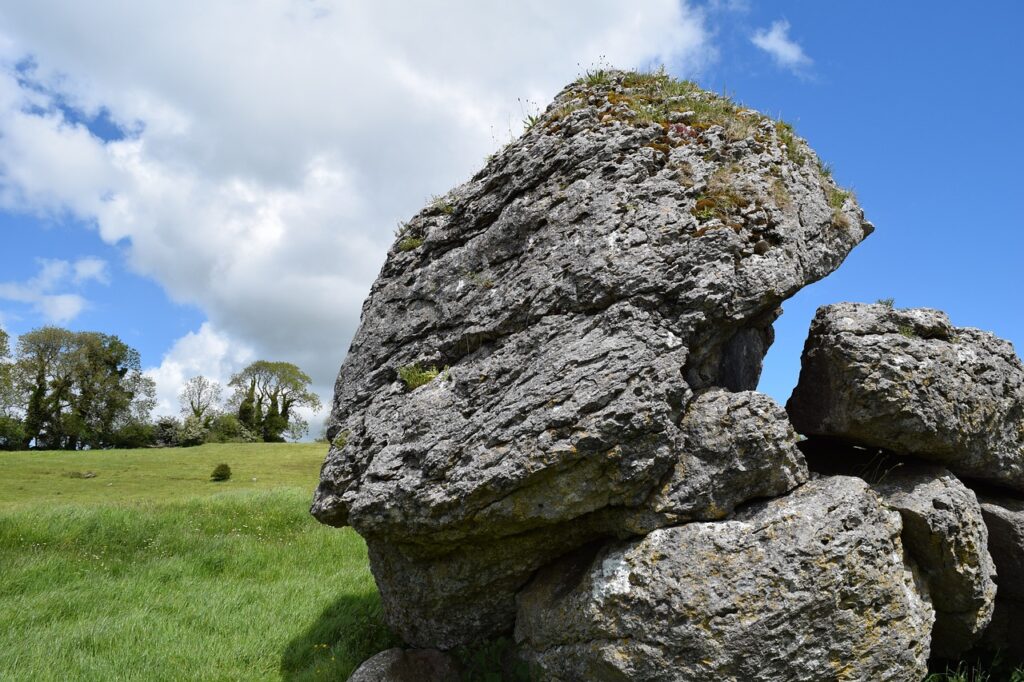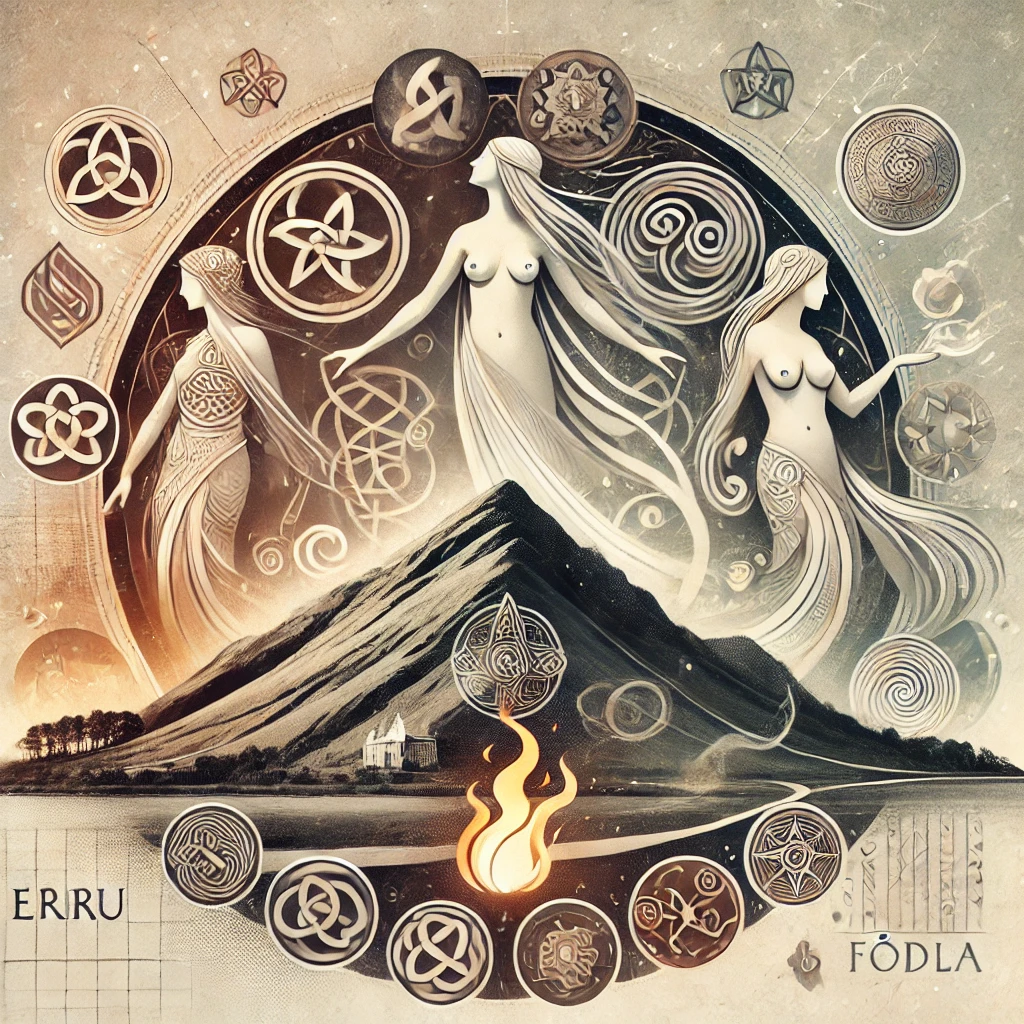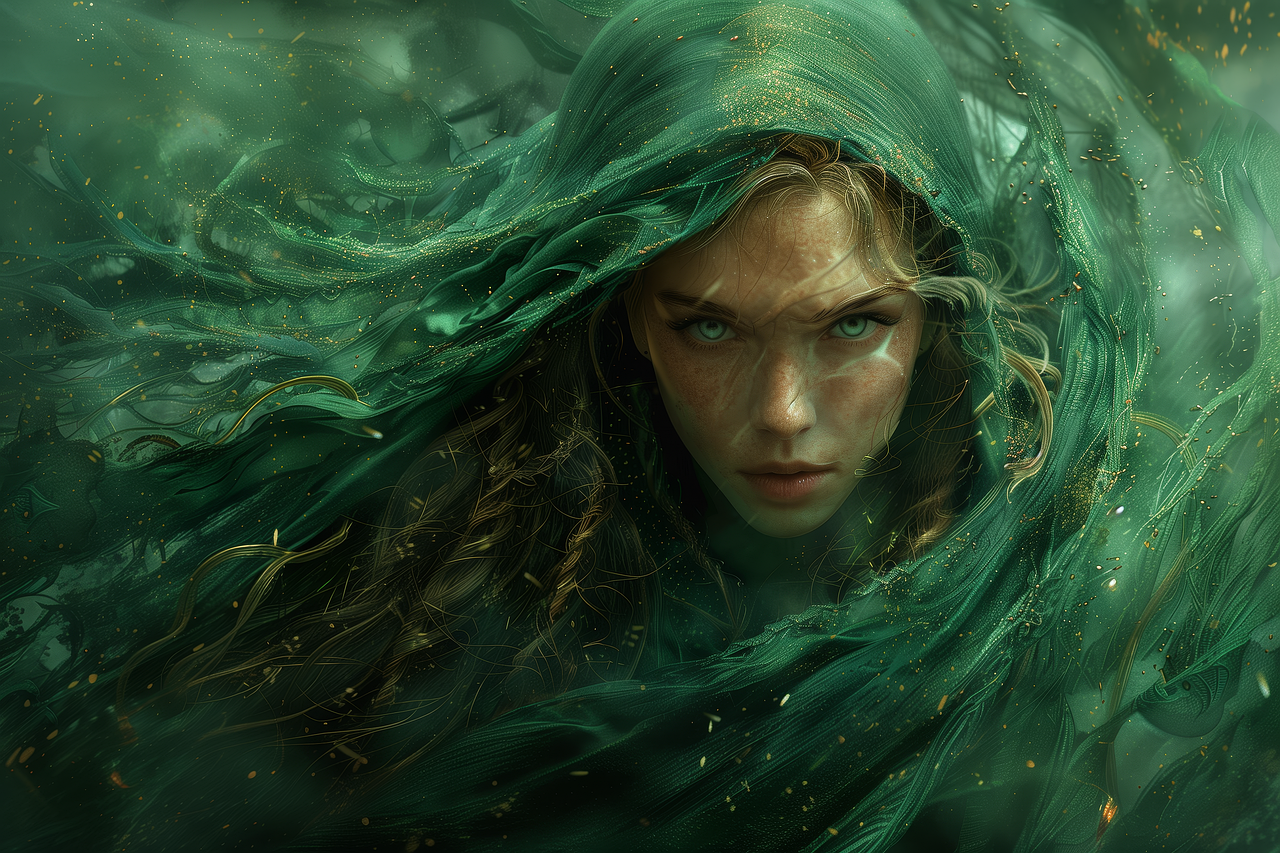Prologue
As I delved into research for a Celtic cross tattoo design, I stumbled upon a captivating thread in Irish mythology that took me deeper than I ever anticipated. My journey led me to Ériu, the goddess of sovereignty and the spirit of the land, whose story is intertwined with the Hill of Uisneach—a place revered as the navel of Ireland. What struck me was how Ériu’s legacy, much like the Celtic cross itself, embodies the intersection of the sacred and the earthly, blending spiritual depth with cultural identity. The Hill of Uisneach, a site where fire rituals once united the ancient Irish, mirrors the cross’s symbolic unity of the divine and the mortal. Through this research, I realized that both Ériu and the Celtic cross serve as powerful reminders of resilience, harmony, and the sacred connections that define us. This discovery not only enriched my appreciation of Irish culture but deepened the personal significance of the tattoo I envisioned.
A Divine Legacy
In the heart of Irish mythology lies a tale that transcends time, echoing through the rolling hills and whispering seas of the Emerald Isle. Ériu, a goddess of sovereignty and the spirit of the land, encapsulates the profound relationship between Ireland and its people. Her story, a tapestry woven from strands of divine femininity, unity, and resilience, beckons us to explore not just the mythology but the very soul of a nation. Ériu is more than a figure from ancient lore—she is a living emblem of Ireland’s enduring spirit, her name echoing in the language and identity of its people.
Ériu’s Mythological Foundations
The story of Ériu begins in the radiant halls of the Tuatha Dé Danann, where she stands as a daughter of Delbáeth and Ernmas, two luminous figures in Celtic mythology. Her heritage intertwines her existence with the very fabric of the island’s spiritual essence, positioning her not merely as a goddess but as the embodiment of Ireland itself. Her significance is immortalized in the modern name for the nation, “Éire,” a living testament to her role as the spirit and sovereign protector of the land. Ériu’s mythic presence, radiating through centuries, reminds us that the connection between a people and their land is sacred, enduring, and deeply personal.
Ériu’s importance is magnified by her partnership with her sisters, Banba and Fódla. Together, they form a divine triad representing Ireland in its totality—a balance of strength, beauty, and unity. When the Milesians, Ireland’s legendary settlers, arrived on the island, they were met by the three sisters, each seeking to have the land named after her. The Milesians’ decision to honor Ériu reflects not only her primacy but also the Celtic fascination with triads as symbols of completeness and harmony. This act of naming was more than a gesture—it was a ritual affirming the sanctity of the goddess and the land she represented.
As a sovereignty goddess, Ériu’s role extended beyond mythological storytelling; she was integral to the very fabric of rulership and governance in Ireland. Her symbolic union with the king was not just a metaphor but a sacred act of alignment between the divine and the mortal. This profound tradition is epitomized in her encounter with the Milesians at the Hill of Uisneach, a moment that resonates as a meeting of destiny, unity, and spiritual approval. Through Ériu, the rulers of Ireland found legitimacy and the land itself found a voice.
The Hill of Uisneach, often called the “navel of Ireland,” is more than a geographic landmark—it is a spiritual axis where the mortal and divine worlds converge. It was here, at this ancient ceremonial site, that Ériu met the Milesians, offering them her blessing and weaving their destiny into the mythic fabric of Ireland. Uisneach, with its sacred fires and panoramic views, symbolizes renewal, vitality, and the enduring heartbeat of the land. Ériu’s presence at this sacred hill reinforces her role as the spiritual matron of Ireland, forever tied to its essence.
Ériu’s name, immortalized in the Irish language and culture, serves as a bridge between the ancient and the contemporary. “Éire” is not just a name; it is a living monument to her legacy, a reminder of how storytelling, language, and identity intertwine. Through Ériu, Ireland’s mythological roots become a foundation for its modern pride, uniting past and present in a shared reverence for the land and its spirit.
The Hill of Uisneach – Ireland’s Sacred Navel

The Hill of Uisneach, often regarded as the navel of Ireland, is a place where myth, history, and geography converge. Rising from the heart of the country, it is a natural and spiritual focal point, celebrated for its connection to Ériu and its role in Ireland’s mythology. The hill’s significance is steeped in layers of meaning—it is a symbol of unity, a sacred gathering place, and a bridge between the mortal and the divine.
Geographically, Uisneach occupies a central position, often considered the meeting point of Ireland’s ancient provinces. This symbolic centrality underscores its role as a unifying force, a place where boundaries dissolve and connections are forged. Spiritually, it has long been regarded as a site where the veil between worlds is thin, a place where rituals of renewal and fertility bring the land and its people into harmony.
The festival of Bealtaine, marking the transition from spring to summer, is one of the most vibrant celebrations associated with Uisneach. During this festival, great fires are lit, symbolizing purification, fertility, and the rejuvenation of the land. Ériu, as the spirit of the land, is deeply woven into these celebrations, embodying the abundance and vitality that the festival seeks to invoke. The flames of Bealtaine, rising against the night sky, serve as a reminder of the sacred bond between the land and its stewards.
It was on this sacred hill that Ériu encountered the Milesians, and it was here that Ireland received its name in her honor. This act of naming was a profound gesture of respect, a recognition of Ériu’s sovereignty and her unifying spirit. The Hill of Uisneach, with its rich layers of myth and ritual, stands as a testament to this pivotal moment in Ireland’s mythological and cultural history.
Even today, the Hill of Uisneach remains a site of reverence and celebration. Modern gatherings, filled with music, storytelling, and rituals, pay homage to its enduring significance. These celebrations connect the past to the present, ensuring that Ériu’s legacy continues to inspire and unite.
Ériu and the Divine Feminine
Ériu is a luminous embodiment of the divine feminine, a concept central to Celtic mythology and culture. She personifies the nurturing, protective, and regenerative qualities of the land, weaving themes of sovereignty and identity into the very essence of Irish tradition. Through Ériu, we see a reflection of Ireland’s cultural values—a reverence for balance, harmony, and the sacred connection between humanity and nature.
Ériu’s story is one of fertility and resilience, celebrating the land’s agricultural bounty and its capacity to endure through cycles of renewal. In her, the Irish people found not only a protector but a symbol of the land’s unyielding vitality. Her myth encourages a sacred stewardship of nature, emphasizing the profound connection between the earth and its inhabitants.
The sacred bond between Ériu and Ireland’s rulers underscores her role as a sovereignty goddess. This connection highlights the interplay between the divine, the land, and its leaders, affirming that rulership is not merely a position of power but a sacred duty to serve and protect the land and its people.
Through Ériu, the Celtic reverence for the divine feminine comes alive. She stands as a beacon of strength and unity, embodying the harmonious balance between power and compassion. Her story inspires not only awe but a sense of responsibility—to honor the land, nurture its spirit, and uphold the values it represents.
Ériu’s legacy is timeless, a cultural touchstone that bridges Ireland’s mythological past and its living present. Her story, resonating through the hills, rivers, and language of Ireland, calls us to reflect on the sacred connections that shape our understanding of identity and place. Through her, the spirit of Ireland endures—a beacon of unity, resilience, and wonder.
A Mythic Reflection
Ériu’s story is more than a myth—it is a mirror reflecting the sacred interplay of land, identity, and mythology. As the embodiment of sovereignty, resilience, and divine femininity, she bridges the mortal and the divine, calling us to honor our connections to the earth and to the stories that shape our understanding of who we are. Through Ériu, the spirit of Ireland comes alive, inspiring a profound reverence for the land, its people, and its timeless myths. May her legacy guide us to nurture the earth, embrace unity, and celebrate the enduring power of storytelling.
Epilogue
As I weave these threads of mythology, history, and personal reflection back into the fabric of the Celtic cross, I find myself seeing it anew. For me, the Celtic cross has always represented a confluence of religion, history, and mystery—a symbol steeped in the echoes of my Catholic upbringing and the whispers of the ancients that call to my pagan sensibilities. But now, after this journey through Ériu’s mythology and the sacred heart of Ireland, it feels like something more: a deeply personal connection, as though I’ve traveled in spirit to the Hill of Uisneach and participated in an ancient rite of passage. Perhaps it was an ancestor walk, a spiritual pilgrimage, or a moment of acceptance into the timeless rhythm of sovereignty and land. Whatever it may have been, the Celtic cross now resonates with a profound new depth, embodying not only the sacred unity of the divine and the earthly but also the harmony within myself—a balance of past, present, and the enduring stories that connect us all.

Appendix
- Ériu, Banba, and Fódla
- Figures from Irish mythology, referred to as the three sovereign goddesses of Ireland.
- Associated with the land and its sovereignty, well-established in folklore and mythology.
- Their existence lacks historical evidence but is well-documented in ancient Irish texts.
- Hill of Uisneach
- A real location in Ireland with historical and mythological significance.
- Linked to mythological events and figures like Ériu and the Milesian invasion.
- Archaeological findings support its role as a ceremonial site.
- Milesian Invasion
- A legendary event in Irish mythology, central to Irish historical narratives.
- Its historical accuracy is debated but remains pivotal in folklore.
- Bealtaine Festival
- An ancient festival celebrated in Ireland and Celtic cultures.
- Associated with land, fertility, and seasonal cycles, with well-documented origins.
Sources
- Academic Books and Articles
- Explore works by James MacKillop, Myles Dillon, and Dáithí Ó hÓgáin.
- Found in academic databases and libraries.
- Online Resources
- Celtic Mythology: Celtic Mythology – Wikipedia
- History of Ireland: History of Ireland – Wikipedia
- Irish Folklore: Irish Folklore – Wilderness Ireland
Additional Notes
- The text combines historical and mythological elements for a compelling narrative.
- Ériu’s mythology varies across sources, but themes of sovereignty and divine femininity remain consistent.
- Approach critically, recognizing the blend of fact and mythological interpretation.
